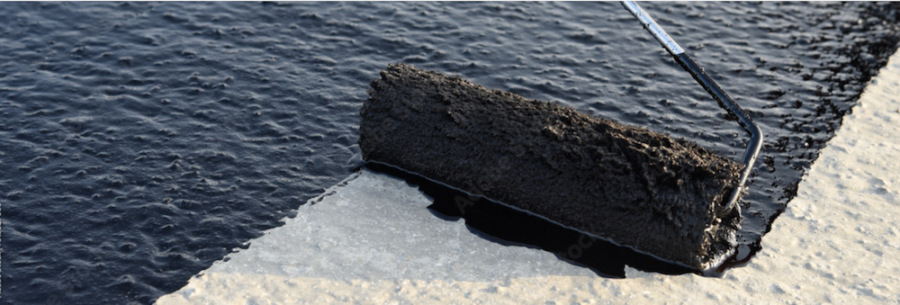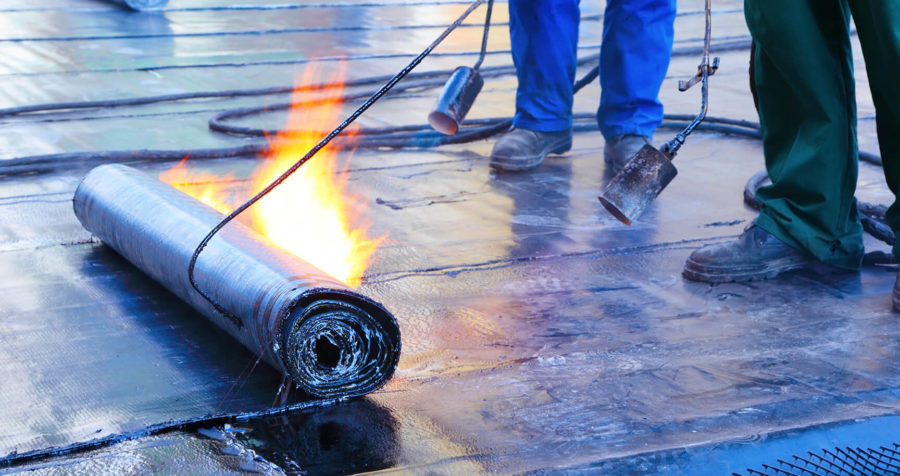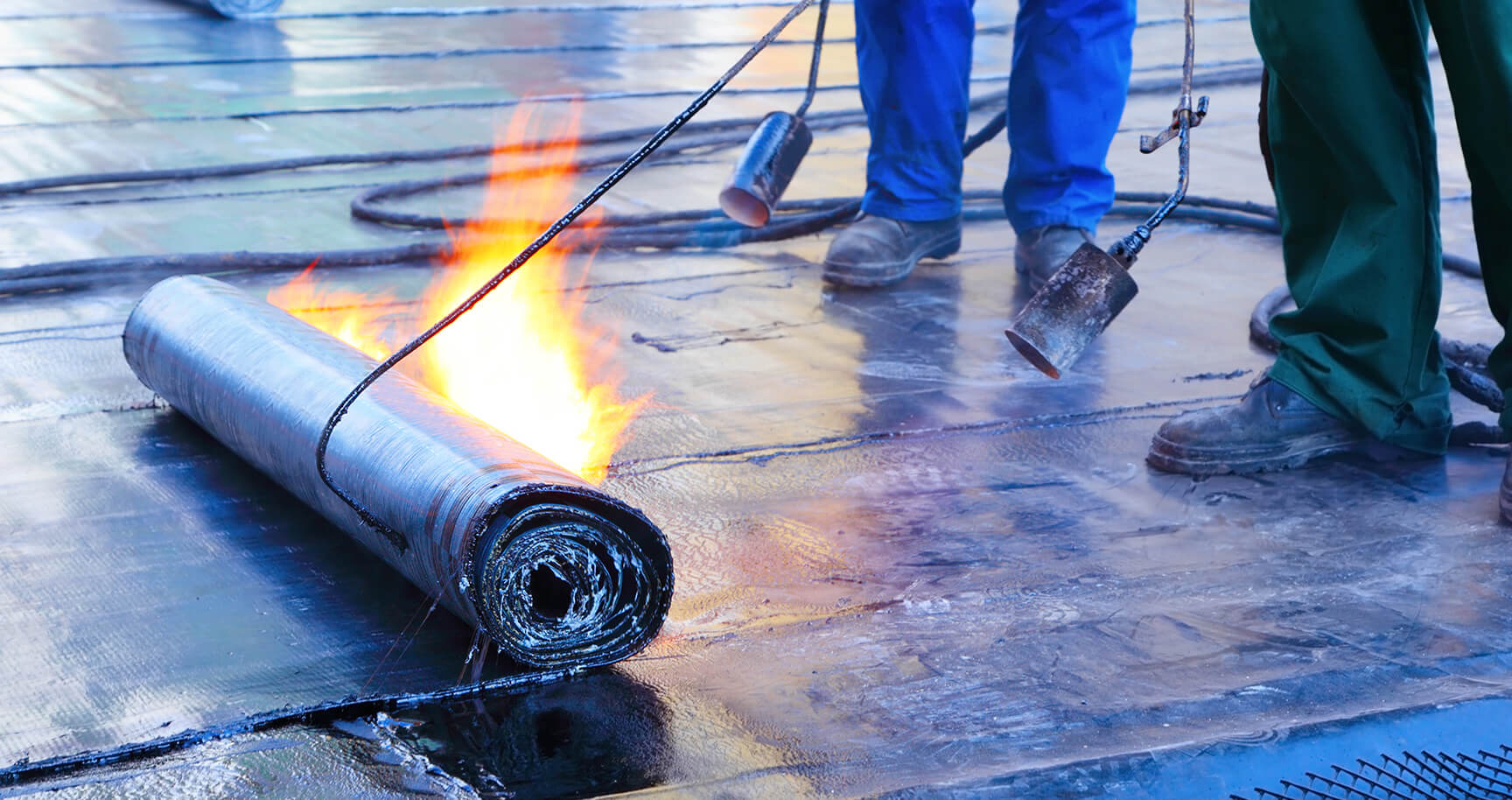Constructing a roof can be a complicated process with many different steps involved depending on the method used. Due to this complexity, the job is better left to the professionals, like the contractors at America’s Choice Roofing. However, if you’re planning to build your own roof, you should probably familiarize yourself with the basic materials and processes.
One common material used in construction roofs, including a flat roof, tar, and gravel roof, is roofing tar. Experts consider roofing tar to be a highly recommended material. Still, it must be used carefully and according to the proper industry guidelines to ensure a safe and successful experience. Part of this process is waiting for the substance to properly dry and seal after application.
So what exactly is roofing tar, and what is the proper method to follow when applying it? Most importantly, how long does it take to dry? Read on below to learn everything you need to know about applying roofing tar.

What is Roofing Tar?
This is a coating that comes from coal tar or sometimes wood tar primarily used to create the first layer of a roofing structure. It is a durable, waterproof substance that keeps moisture out of your home’s interior and protects against dampness leading to more severe problems like wet wood that can cause structural damage in the future.
What Benefits Does Roofing Tar Have to Offer?
This substance has many positive attributes that can strengthen the integrity of your roof. Not only is roofing tar waterproof, but it is also resistant to UV rays, which come from the sun beating down on it all day. This is very helpful because prolonged sun exposure without adequate protection can cause cracking, leading to more severe problems later.
Additionally, it is a very affordable material. A tar roof costs significantly less than asphalt shingles, and this reduced tar roof cost can free up your home improvement budget.
Are There Any Drawbacks to Using Roofing Tar?
One negative consequence of using this substance is that it can severely irritate the lungs. It’s essential to follow all the recommended safety precautions during this time.
Another drawback is that it can only be applied during specific weather conditions. We’ll look more closely at the ideal climate for working with this substance below.
What Kind of Roofs Should Roof Tar Be Used On?
This sealant is most typically used when building flat roofs, though it can be applied as a first layer of any roofing structure. A roof with a flat surface area is more likely to benefit from the protection that this coating offers.
What Roofs Should Not Be Treated with this Product?
A badly damaged roof should not have this substance applied to it. It is only intended to be laid on structurally sound surfaces and not patch up any problem areas.
Are There Alternative Roof Coatings Available?
Due to the toxicity of roofing tar and its need to be used in specific weather conditions, some homeowners may be interested in an alternative roof sealant without these minor drawbacks. While most industry professionals consider roofing tar to be the best roof sealant, you can use a different roof coating like the ones described below.
Rubberized Tar
Rubberized tar is a similar material to roofing tar with some added benefits. It holds up better to slick surfaces and wet weather, so this is an excellent option to use if you have to apply tar in the rain.
Roof Cement
Roofing cement is a similar material made out of fresh asphalt. When the asphalt softens, it can be applied to a surface, and then it hardens as it dries, just like when installing a new asphalt driveway. The main benefit of this material is that it is incredibly durable. However, it is more expensive and less resistant to the sun.
While laying cement on your roof is not waterproofing, it does create a moisture repellent barrier between the outside and the inner ceiling.
How Much Time Does Roof Cement Take to Dry?
It generally takes about 12 hours to dry, but this varies depending on many factors to be discussed below.
How Long Does Roof Tar Take to Dry?
The expected timing really comes down to the weather on that day. Coatings require a daylight period (about 8 hours) to a full day to dry. The drying period varies wildly depending on how moist conditions are at the time. It shouldn’t take as long to dry in warm temperatures with dry weather. But with dew and high humidity, the substance can take a while to completely cure.
When Is the Drying or Curing Period is Over?
There are no real indicators to look for once it’s been applied. Just consider the climate conditions and act accordingly. For instance, if there is high humidity, you should wait the full 24 hours before proceeding.
Can You Apply Roofing Tar Under Any Conditions?
It is not recommended to apply tar in the rain or humid conditions. If you absolutely must lay down tar in the rain, consider using rubberized tar instead.

What Materials Will You Need to Apply It?
When the time comes to apply tar to your new roof, you’re going to want to make sure you have everything you need at your disposal ahead of time. Luckily, most roofing tar application projects only require a couple of simple tools. Let’s take a look at everything you’ll need to get your materials to adhere properly.
Roller
The roller is what you’ll use to apply the substance to the roof. Choose a large enough roller to cover the entire surface to apply evenly.
Underlayment
While tar paper is the most common underlayment, you have some alternatives to choose from. A latex primer or a more natural substance like an oil base primer will do the job just fine.
What is the Proper Application Method?
Roof installation is serious business, and it’s essential to do it properly if you want good results and adhere to local building codes. So if you’re going to do it yourself, be sure to follow instructions carefully and not skip any steps. An improper application could leave your roof’s seal compromised and render the protective coating ineffective.
Inspect Your Roof
The primary inspection is a critical first step. Ensure your entire roof is structurally sound and there are no problems with the roof decking before proceeding.
Heat Your Tar
The substance has to loosen up before use. To soften roofing tar, leave it out in the sun or blow hot air on it until it reaches the desired consistency.
Clean the Area
Make sure there are no debris or loose objects on the roof before you start so that the surface will be even.
Apply with Roller
Using a roller has the best results generally speaking & roof coatings take on the best look when they’re applied evenly. So use the roller to put down tar, making long, even strokes.
Does Tar Stop Roof Leaks?
Tar is not a suitable material for plugging a roof leak. This would be a temporary, band-aid solution that should be avoided. Contact your local roofing experts, like America’s Choice Roofing, for assistance with leaks.
Does Roof Tar Ever Dry?
Yes, tar will eventually dry. The period span difference really depends on hot temperatures with dry air rather than humidity can help speed up the process. So, apply the substance under warm and dry conditions for faster results.
Find Help from Local Experts
A tar and gravel roof is an excellent choice for your residential property, but it can be difficult to construct an entire roof and apply roofing tar by yourself if you’re not a seasoned professional. Luckily, plenty of roofing companies like America’s Choice Roofing are available to help. Contact contractors today to get assistance with your roofing project.

